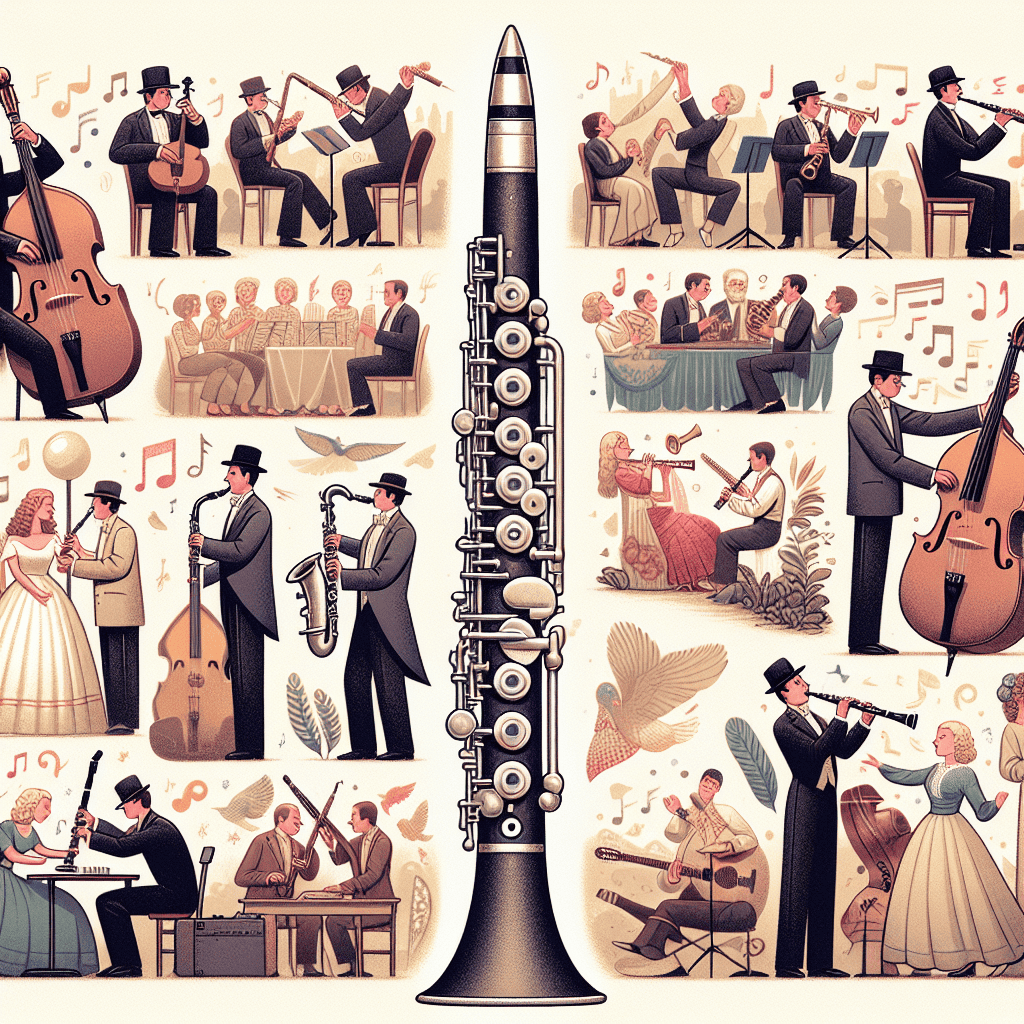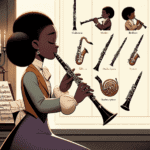In today's fast-paced music scene, the clarinet is carving out a unique and influential spot. This versatile instrument, known for its rich and expressive tones, is making a comeback in various genres, from classical and jazz to contemporary and electronic music. As a clarinet enthusiast, I've noticed some fascinating trends that are changing how musicians and audiences view and use the clarinet.
The Rise of the Clarinet in Contemporary Genres
Traditionally, the clarinet has been a staple in classical and jazz music. But now, it's popping up more in pop, rock, and electronic music. Artists are drawn to its unique sound and the emotional depth it brings. The Martin Freres clarinet, for example, is becoming a favorite for musicians who want a mix of tradition and innovation.
Jazz and Beyond
Jazz has always been a playground for the clarinet, thanks to legends like Benny Goodman and Artie Shaw. Today, modern jazz musicians are pushing the instrument's boundaries even further. The Martin Freres clarinet is often chosen for its warm, rich tones, which are essential in jazz. Its agility and dynamic range make it perfect for expressive improvisation, a must-have for contemporary jazz players.
| Genre | Clarinet's Role | Notable Artists |
|---|---|---|
| Classical | Orchestral solos, chamber music | Martin Fröst, Sharon Kam |
| Jazz | Lead instrument, improvisation | Anat Cohen, Ken Peplowski |
| Pop/Rock | Textural elements, solos | Sting, Radiohead |
| Electronic | Sampled sounds, effects processing | Squarepusher, Björk |
Technological Advancements and the Clarinet
Technology is playing a big role in the clarinet's evolution. New materials and manufacturing processes are making instruments that are more durable and consistent, with better sound quality. For instance, modern clarinets made with advanced polymers or hybrid materials offer better performance and last longer than traditional wooden ones.
Electronic Clarinet Integration
One of the most exciting developments is the integration of electronic elements with the clarinet. This trend is opening up new possibilities for sound modulation and performance. Musicians can now connect their clarinets to electronic devices and effects processors, allowing them to explore a wider range of sounds and styles. This integration is especially popular in genres like electronic dance music (EDM) and experimental music, where the clarinet's sound can be transformed in innovative ways.
Educational Trends in Clarinet Training
The way clarinet is taught is also changing. Online lessons and digital resources are becoming more popular, making high-quality instruction accessible to more people. This shift is helping to democratize music education, allowing aspiring clarinetists from all over the world to learn from top-tier instructors.
Virtual Masterclasses and Workshops
Virtual masterclasses and workshops are gaining traction, offering students the chance to learn from renowned clarinetists without geographical constraints. These sessions often cover advanced techniques, performance practices, and insights into the clarinet's role in various musical contexts. The Martin Freres community, for example, frequently hosts such events, fostering a global network of clarinet enthusiasts and professionals.
Sustainability and the Clarinet
Sustainability is becoming an important consideration in the world of musical instruments. The clarinet industry is no exception, with manufacturers exploring eco-friendly materials and practices. This shift is driven by both environmental concerns and a desire to create instruments that are ethically produced and more sustainable over their lifespan.
Eco-Friendly Materials
Manufacturers are increasingly using sustainable materials such as responsibly sourced wood and biodegradable polymers. These materials not only reduce the environmental impact but also contribute to the instrument's durability and sound quality. The Martin Freres clarinet is an example of how traditional craftsmanship can be combined with modern sustainable practices to produce high-quality instruments.
Sustainable Clarinet Materials
- Responsibly sourced African Blackwood
- Grenadilla wood alternatives (e.g., Mpingo)
- Recycled plastics for keys and ligatures
- Bio-based resins for synthetic components
- Sustainable packaging materials
Clarinet Collecting and Valuation
The market for vintage and collectible clarinets is robust, with instruments from well-known makers being highly sought after. Collectors and musicians alike are interested in the historical and artistic value of these instruments. The Martin Freres clarinet, with its rich heritage and reputation, is often a prized possession among collectors.
Determining Value
When valuing a clarinet, several factors come into play, including the instrument's age, condition, maker, and provenance. Expert appraisals are essential for accurately determining an instrument's market value. Collectors often seek clarinets that have been well-maintained and come with a documented history, which adds to their allure and worth.
The Future of the Clarinet in Modern Music
The clarinet's versatility and expressive capabilities ensure its continued relevance in modern music. Whether it's through technological advancements, integration into new genres, or sustainable practices, the clarinet is poised to remain a vital and dynamic instrument. The Martin Freres clarinet, with its blend of tradition and innovation, exemplifies the instrument's enduring appeal and adaptability.
As we look to the future, it's clear that the clarinet will continue to inspire and captivate musicians and audiences alike. Its rich legacy, combined with ongoing innovation, promises exciting possibilities for this timeless instrument.
Table of Contents
- The Rise of the Clarinet in Contemporary Genres
- Jazz and Beyond
- Technological Advancements and the Clarinet
- Electronic Clarinet Integration
- Educational Trends in Clarinet Training
- Virtual Masterclasses and Workshops
- Sustainability and the Clarinet
- Eco-Friendly Materials
- Clarinet Collecting and Valuation
- Determining Value
- The Future of the Clarinet in Modern Music







